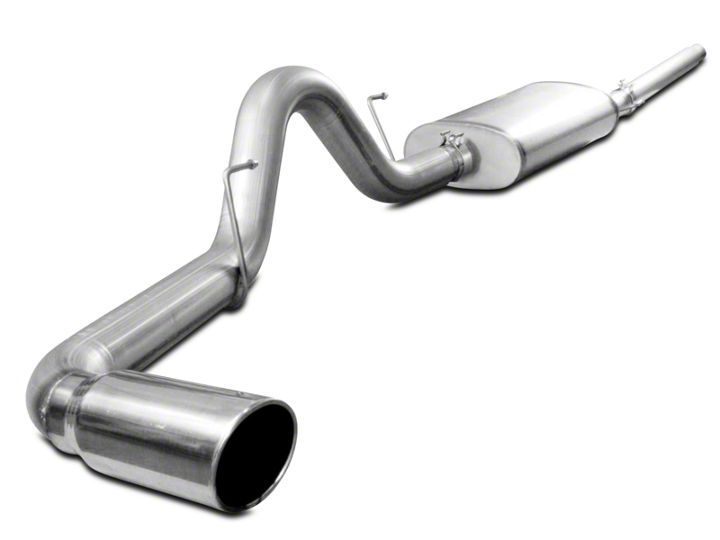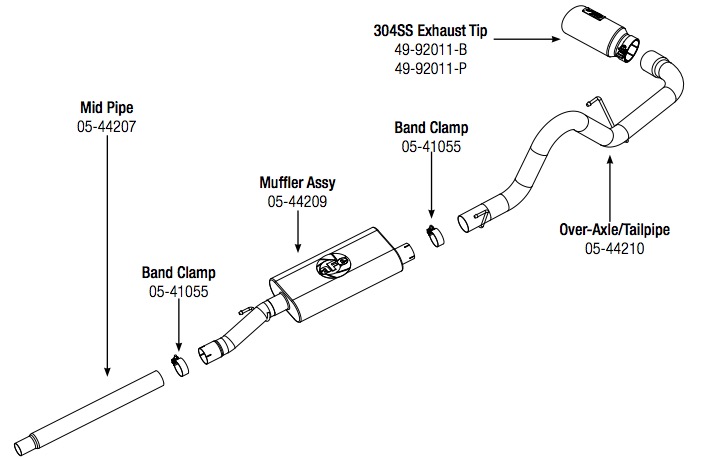
How to Install an AFE Mach Force XP Cat-Back Single Side Exit Exhaust - Polished Tips on your F-150

Shop Parts in this Guide

Step 1: (Read Instructions prior to installation) Remove your stock exhaust up to the catalytic converter from the rear of your truck working your way forward. Take caution not to damage the factory band clamp and isolation mounts as they will be reused.. It is recommended to not fully tighten the clamps until the entire system has been installed.
Step 2: For faster installation spread the pieces of the exhaust along side of your vehicle according to the diagram shown.
Step 3: Slip factory band clamp over reduced end of the mid-pipe. Now install the mid-pipe. It will require cutting at the rear end. Cut on the end that is not reduced to fit shorted wheel bases. Test fit prior to cutting. Cut 6" for 144.5" WB, Cut 12" for 138.5" WB, Cut 18” for 132.5" WB and do not cut for 150.5" WB
Step 4: Slip band clamp over expanded end of muffler assembly prior to installation.
Step 5: Utilizing the factory isolation mounts now install over-axle/tailpipe and tighten all band clamps from front to rear.
Step 6: Your installation is now complete. It is recommended to re-tighten all exhaust components after 50-100 miles.
NOTES: • aFe recommends that the tailpipe be at least 1/2”-1” away from any body panels to avoid heat related body damage. Tighten and secure.
• Controller/Programers are required to operate this system. Extra sensor bungs are included and need to be welded in place if your programmer requires sensors.
Caution: Allow time for your vehicle to cool down prior to installation. When working on or under your vehicle proceed with caution. Exhaust systems reach high temperatures and may cause serious burns. Wear protective safety equipment; eye goggles and gloves to ensure a safe installation. aFe recommends professional installation on our proaducts.

